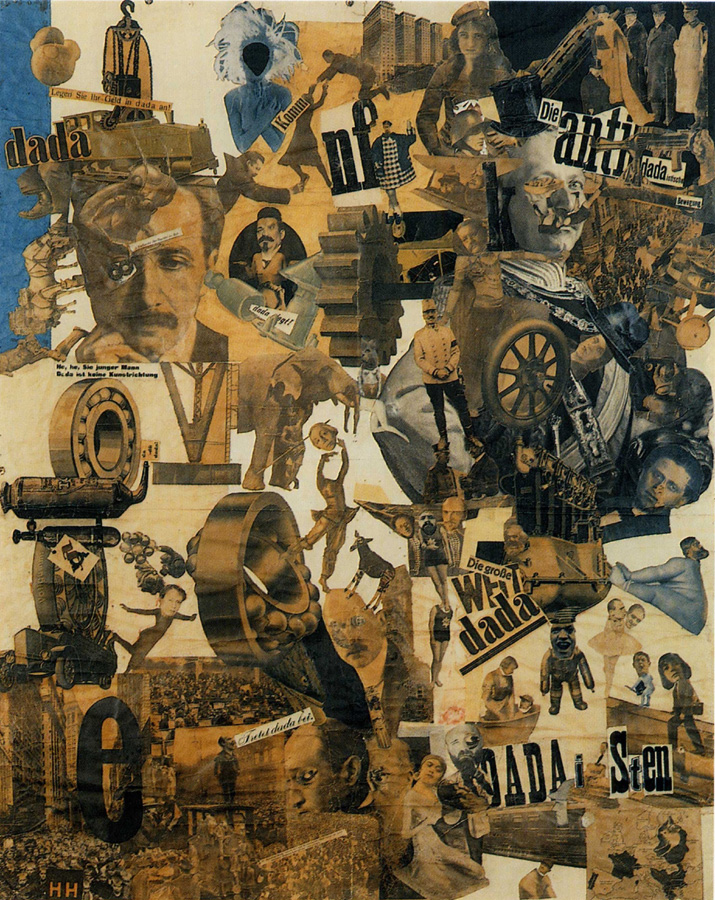Scan barcode
A review by glenncolerussell
The Photomontages of Hannah Hoch by Hannah H̦ch
5.0

One of the leading artists in the Berlin Dada movement during Post-World War I Weimar Republic times, Hannah Höch (1889-1978) was among the most original and creative minds in the world of 20th century art. This book is a comprehensive study covering 50+ years of her experimentation and innovation in constructing photomontages, an art form employing scissors, glue and photo images from magazines and newspapers. Also, much information is provided regarding her life and times, with a particular emphasis of how the artist responded to the place of women within the context of 20th century European culture and society.
In order to provide a glimpse of the richness of Hannah Höch’s photomontages (this book contains more than 100 color plates), I will focus exclusively on one of her most famous works with the many-word title – Cut with the Kitchen Knife Dada through the last Weimar Beer Belly Cultural Epoch of Germany (1919-1920) 114 x 90 cm. (4 ½ feet x 3 ½ feet). One could write page after page about the Dadaist rendering of people, ideas, and events depicted in this photomontage that slices and dices a society moving through those turbulent 1919-1920 years. Several modest observations:
At the bottom left, Hannah Höch continues the tradition of the great 16th century German artist Albrecht Altdofer’s colossal painting The Battle of Alexander at Issus with hundreds if not thousands of men and women gathered as participants in monumental political or historic events. Also included are a number of not so monumental events – a crowd of children on a street, a symphony orchestra, a roomful of seated politicians. A leader stands atop a red-cross truck exhorting a crowd to join Dada. Oh, Hannah, what you did with inserting words! And above the crowds there’s a huge truck, an even larger automobile tire and a gigantic piece of ball-bearing machinery - truck, tire and ball-bearing all part of the overarching theme of how technology, machines, gadgets and weapons propel an urban society in motion.
Moving up we can see a giant black ant emerging from a pensive, mustachioed man’s forehead, Well, my goodness, that man is none other than Albert Einstein! And Einstein is telling us Dada is not an art trend. There are a many other happenings, including a horse eating from a pail in Einstein’s right ear, a dog-like creature nibbling on the toes of a human foot, two round gears in Einstein’s right eye, a locomotive on Einstein’s head puffs steam that reads “Put your money in Dada.”
Shifting over to the upper right, Hannah Höch portrays anti-Dada society: a row of four drab, uniform high rise office buildings, a WWI soldier wears a Stahlhelm helmet, the helmet that would became the easily recognized Nazi helmet, a machine gun, generals standing in a row, a white-uniformed general facing front, more wheels and gears, the extra-large head of Kaiser Wilhelm with the bottom half of two human bodies for his moustache - all finely cut images crammed together like tightly packed sardines, undoubtedly signifying how these were chaotic times in Germany, times when political factions on both the left and the right engaged in battle with innocent men and women caught in the bloody crossfire.
The bottom right features many Dada artists, including Raoul Hausmann, George Grosz and John Heartfield along with the head of Karl Marx and Vladimir Lenin. In a power reversal, men are cut and castrated, their heads sitting atop all sorts of demeaning or very unmasculine bodies, for instance, a fat child, a robot, a ballerina. In the corner we can see a map of Europe complete with an extra-long legged white mouse to the east of Germany. A submarine, perhaps one of those old German water-boats, sits on the back of the white mouse. Rather than signing her work, Hannah Höch simply inserted a photo of her head in the upper left corner of the map. Dada. Dada. Dada.

All in all, a work where women are given a prominent role in sparking and facilitating change in this male-dominated society. We will find women who are dancers, actors and artists, most especially we find graphic artist and sculptor Käthe Kollwitz, powerful voice for victims of inhumanity, at the very center with a Dada cut and twist: her head is separated from her dancer body; matter of fact, the dancer appears to be playing with her head as if playing with a beach ball – very lyrical, very delicate. The more I discover in this photomontage, the more l realize how much I have yet to discover, an entire Dadaist universe of cuts and connections facilitated by the artist’s kitchen knife.

Hannah Höch self-portrait